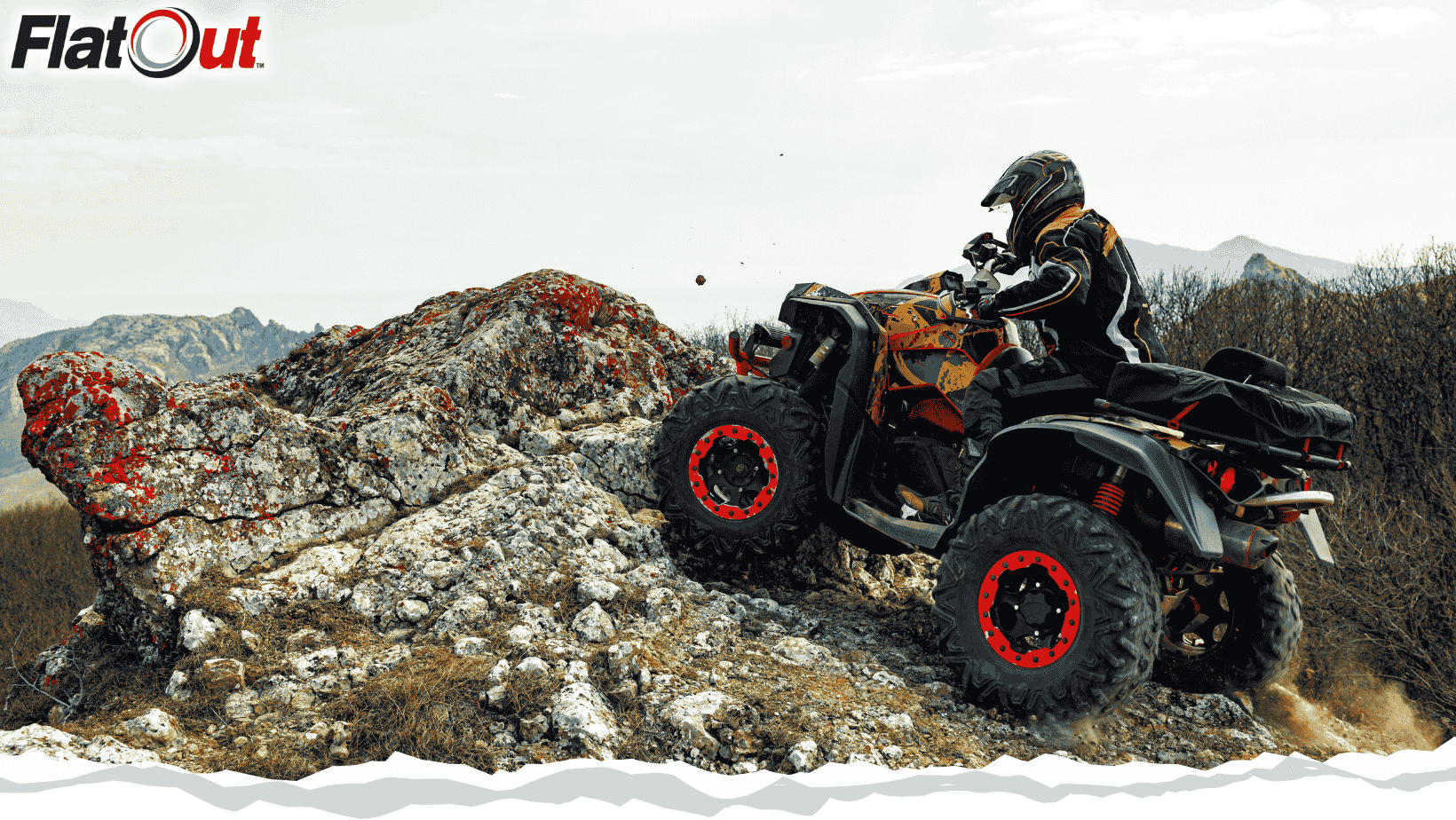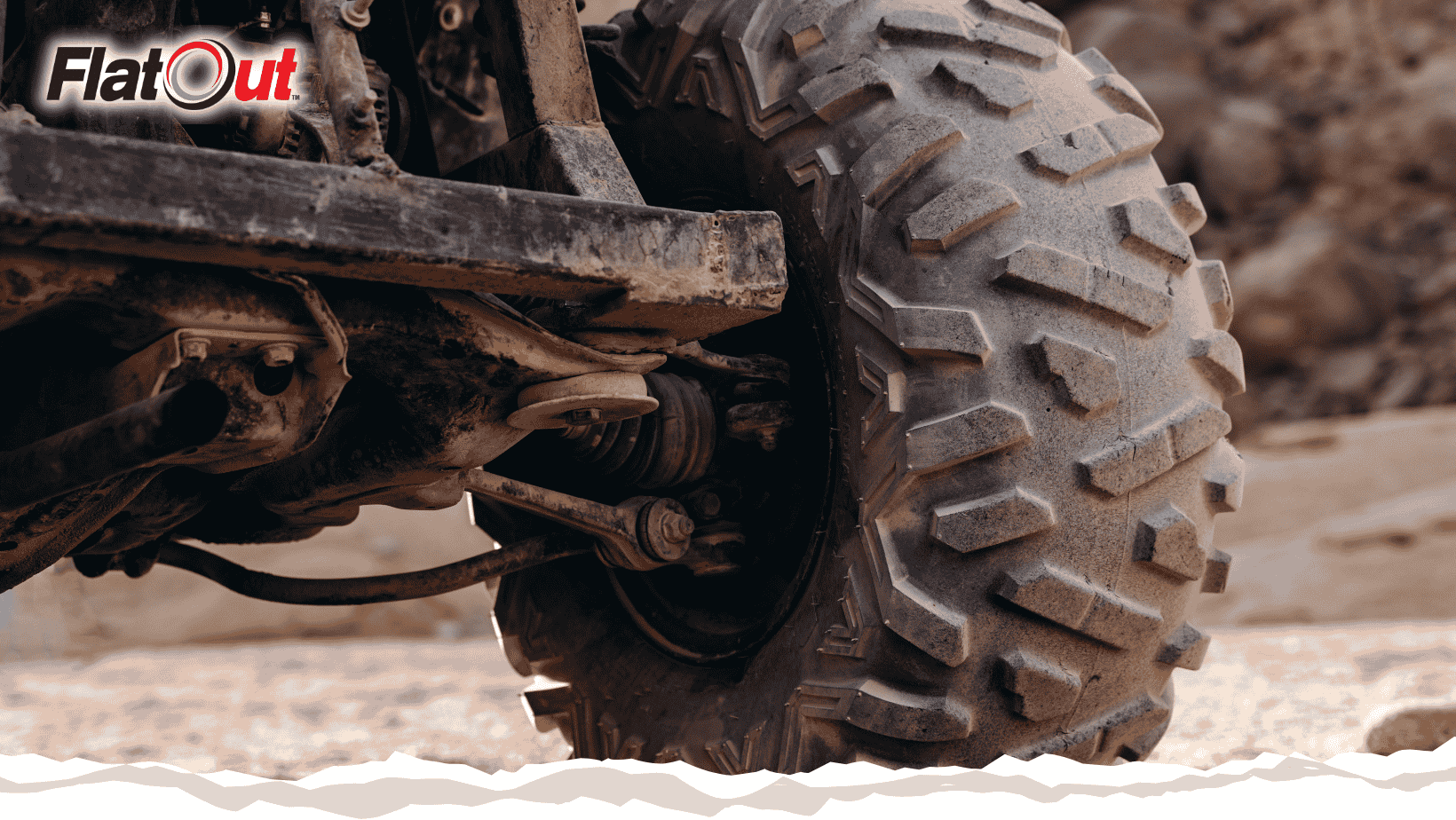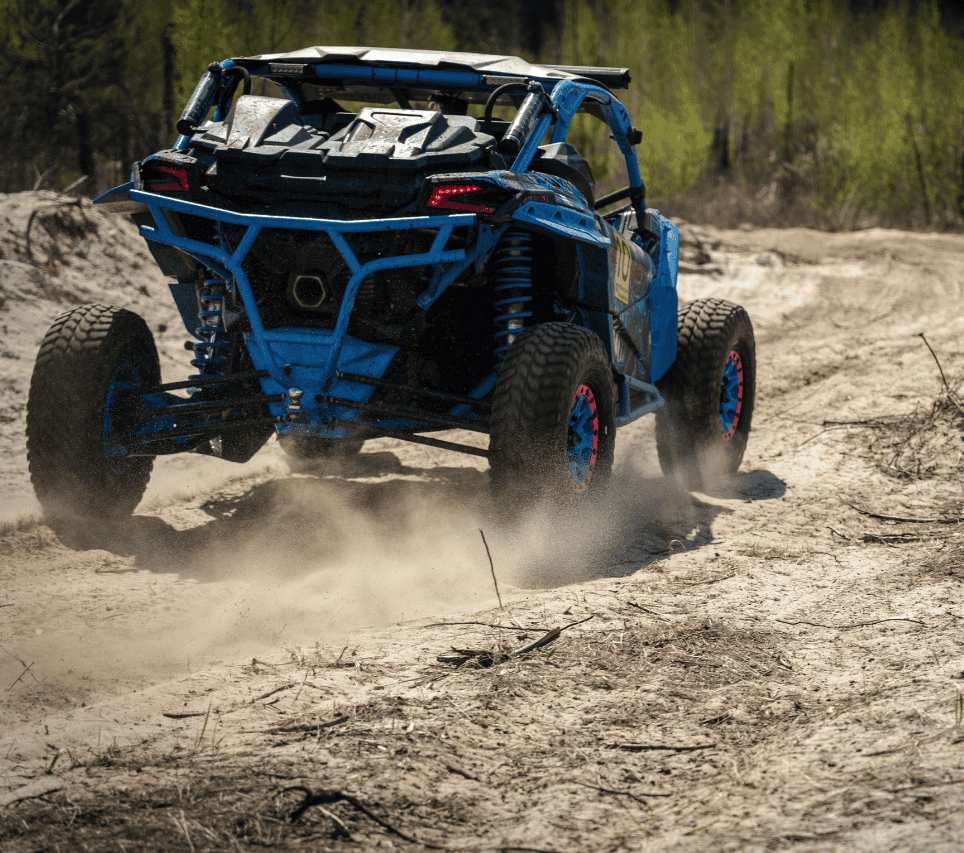
Picking the Right Tire Sealant for Rugged Terrains
Now that spring is right around the corner, it’s time to load up your equipment and hit the trails. But

When it comes to protecting your tires, not all tire sealants are created equal. While some sealants promise to get the job done, the truth is that many fall short. That might leave you asking, “What to Avoid in a Tire Sealant?” Choosing the wrong tire sealant can leave you with a flat tire, a costly repair, and a ruined weekend.

Some sealants just don’t last. If you installed sealant in your lawn mower two years ago, are you really going to remember to wash it out and replace it on the expiration date? A rogue nail that fell out of your toolbox is probably going to be your reminder.
How FlatOut™ Compares: FlatOut™ lasts 10+ years and for the life of the tire. You don’t have to mark the calendar for replacement day, because FlatOut™ has your back.
You need a sealant that can seal more than a pinprick. Many tire sealants claim to only seal punctures up to ¼’’ in all tire sizes.
How FlatOut™ Compares: Our classic formulas, QuickStrike™ On Road, and QuickStrike™ Off-Road seal up to ½’’ punctures. That’s double the puncture size of most competitors.
Learn more about FlatOut’s puncture-sealing capabilities here.
There is nothing more frustrating than spending an afternoon scraping dried sealant out of a tire. On the flip side, when a sealant that is full of fibers dries out, it can form a fiber wad that bounces around in your tire. No matter which way your sealant dries out, it renders it useless.
How FlatOut™ Compares: FlatOut™ sealants don’t dry out. The sealant stays liquid in your tire so the Kevlar fibers and inorganic fillers can form a plug in a puncture when needed.
Even though many tire sealant companies use latex in their formulas, it is usually at the root of the issues with many tire sealants. If the formulas do work in the beginning, they eventually dry out and leave a sticky mess.
How FlatOut™ Compares: All of our formulas are latex-free, which means no fiber wads and no drying out. Just high-performing sealing power.
When shopping around for a sealant, check the freeze point. Even though it’s springtime now, you don’t want a frozen solid block of sealant in your tire when winter hits.
How FlatOut™ Compares: FlatOut™ is freeze-resistant down to -31°F (-35°C), making it ideal for most winter climates. Unless you’re deep in the Arctic or Siberia, you’ll have no problem during the winter months.
In the United States, all modern passenger vehicles must have TPMS (Tire Pressure Monitoring Systems) installed on all wheel positions. These types of sensors, typically found on passenger cars, are not designed to be liquid-friendly. However, many tire sealants claim to be “TPMS Safe or Friendly”. Beware of companies that make this claim. There is nothing magical that is added to make the sealant “TPMS Safe”… a liquid is a liquid. Be sure to read the fine print.
How FlatOut™ Compares: We do not and have never recommended FlatOut™ for passenger vehicles. In fact, we have it stated on our packaging and multiple places on our website. Check out our FAQs page to learn more about passenger vehicles and tire sealant.
Tire sealant isn’t something you want to have to keep replacing. That’s why you need a formula that will work when you need it and lasts for the long haul. FlatOut™ was designed to do this and more! Now that you know what to avoid in a tire sealant, check out all of the FlatOut™ formulas here, or check out how much you need using our dosage calculator here.

Now that spring is right around the corner, it’s time to load up your equipment and hit the trails. But

Whether you’re a seasoned rider or new to the eBike game, eBike maintenance and keeping your eBike in top condition